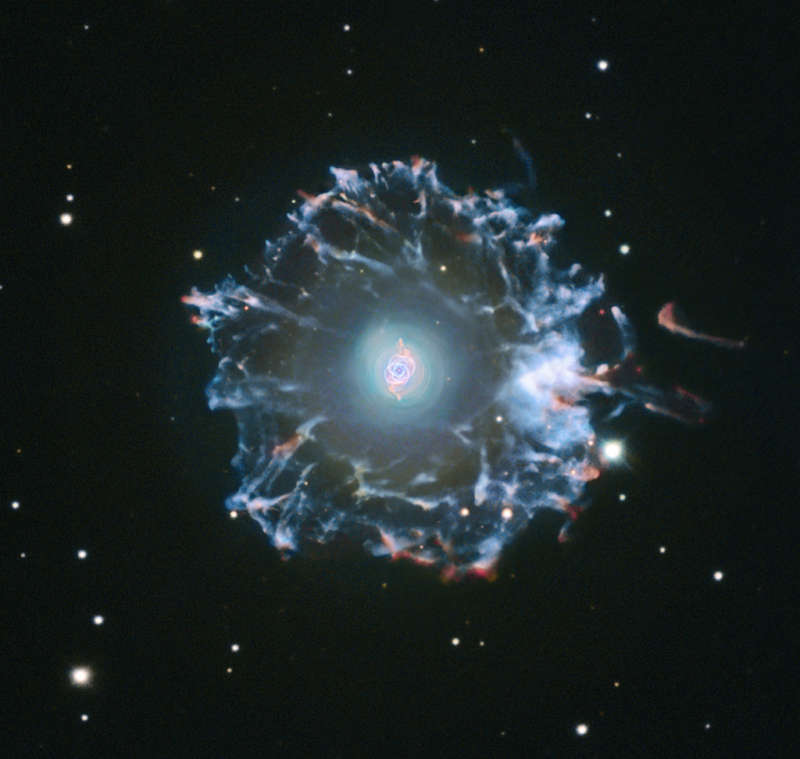Credit & Copyright: Data:
Michael Joner (West Mountain Observatory,
BYU),
Romano
Corradi (IAC),
Hubble Legacy Archive -
Processing:
Robert Gendler
Explanation:
Not a Falcon 9
rocket launch after sunset, the Cat's Eye Nebula (NGC 6543) is
one of the best known planetary nebulae in the sky.
Its haunting symmetries are seen
in the very central region of
this
composited picture, processed to reveal an
enormous but extremely faint halo of gaseous material, over three
light-years across.
Made with data from ground- and space-based telescopes
it shows the extended emission which surrounds the brighter, familiar
planetary nebula.
Planetary nebulae have long been appreciated as a final phase
in
the life of a sun-like star.
But only more recently have some planetaries been
found to have halos
like this one, likely formed of material shrugged off during
earlier active episodes in the star's evolution.
While the planetary nebula phase is thought to last for around
10,000 years, astronomers estimate the
outer filamentary
portions of this halo to be 50,000 to 90,000 years old.
1999 2000 2001 2002 2003 2004 2005 2006 2007 2008 2009 2010 2011 2012 2013 2014 2015 2016 2017 2018 2019 2020 2021 2022 2023 2024 2025 |
Yanvar' Fevral' Mart Aprel' Mai Iyun' Iyul' Avgust Sentyabr' Oktyabr' Noyabr' Dekabr' |
NASA Web Site Statements, Warnings, and Disclaimers
NASA Official: Jay Norris. Specific rights apply.
A service of: LHEA at NASA / GSFC
& Michigan Tech. U.
|
Publikacii s klyuchevymi slovami:
Cat's Eye Nebula - planetary nebula - galo - tumannost' Koshachii glaz - Planetarnaya tumannost'
Publikacii so slovami: Cat's Eye Nebula - planetary nebula - galo - tumannost' Koshachii glaz - Planetarnaya tumannost' | |
Sm. takzhe:
Vse publikacii na tu zhe temu >> | |
